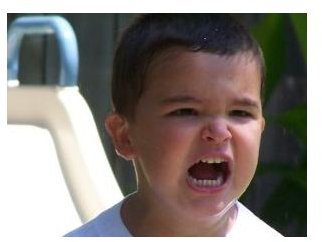Tips for Parents: Help Your Preschooler With Anger Management
Identify the Child’s Feelings
Young children are at times incapable of productively expressing their anger. They get mad and throw things, scream, or even hit people. They don’t exactly understand what they are feeling and that confusion makes it even worse. Children’s activities for anger management include learning how to identify and talk about their feelings, using redirection and understanding alternative methods to get out those frustrations.
Try to figure out what is bothering the child and acknowledge his right to feel that way. Say something like “I know it hurts your feelings when you can’t play outside. It is okay to feel angry about that right now.” Also, acknowledge when the child is experiencing other feelings to help him differentiate between all of them.
Identify when the child is misdirecting anger. When he yells, “I hate you!” Try replying: “You don’t hate me. You are just angry with me because I won’t let you do what you want.”
As the child expresses his anger, label his feelings and connect them to his behaviors. “I can see that you are frustrated right now because you are stomping your feet.” Teach him to recognize those actions within himself and to verbally acknowledge them.
Read Books About Feelings

Children can sometimes relate better to stories about other children. Use some classic children’s books to help your child learn how to identify his feelings. One of our favorite books is Alexander and the Terrible, Horrible, No Good, Very Bad Day by Judith Viorst. Another book good for both parents and children is <em>Words Are Not for Hurting</em> and <em>Hands Are Not for Hitting</em> by Elizabeth Verdick.
Read these stories together and talk about situations in which the child has felt the same way. Discuss how the child in the story handled those feelings and have the child compare it to his or her own. Use these books on a regular basis to provide a foundation upon which he or she can draw upon when feeling angry.
Set Up a Peace Table at Home

Implement the use of a peace table or peace corner in the house. Set up a neutral zone where you can have conversations with your child.
When your child is frustrated with you, he should be able to say, “I invite you to the peace table!” He can hold the peace flower and tell you why he is mad, using “I” statements. “I am mad at you because you won’t let me go to my friend’s house.” After he makes his statement, he has to give you the peace flower so that you can respond.
Acknowledge his feelings and then explain why you made your decision. Allow him to give you some feedback. Continue passing the peace flower back and forth. Work on compromise yet remain firm about your decision. You can say something like “Sometimes I have to make some rules that you do not like. I do this because I love you and care for you. Let’s talk about another time that you can go to a friend’s house or how you can earn a trip to your friend’s house.”
It is important not to laugh at your child as he expresses how he is feeling even if it seems comical. Remember that these feelings are truly how he is feeling. To laugh at him is to belittle him.
Practice using the peace table before a problem escalates. Demonstrate its use with another adult or older child who understands the process. That way, when the need arises, it is familiar.
If there is limited space to set up a peace corner or peace table in the home, keep the peace flower in a special location such as on a shelf. That way, it is always accessible and can be used anywhere in the house.
Get the Anger Out
Even as adults we sometimes just need a chance to get the anger out. We feel the need to throw something or to hit something. Let your child stomp her feet and yell for a moment. Turn it into a game. Set up a boxing buddy. Put your child into a form of martial arts to learn how to control those movements. Throw a ball against a wall. Take your child out jogging with you to pound the pavement.
Proprioceptive activities for children help anger management and body control. Think about how much better you feel when you have scrubbed the floor. Encourage your child to help clean by spraying shaving cream on the counter. Other ideas would be to rake leaves or have your child run a manual sweeper.
Introduce Calming Exercises
Children also need to learn how to balance their emotions. Yoga for kids is becoming increasingly popular. Practice breathing exercises and other relaxation techniques. A great series to use is by Stress Free Kids. On this website, the Angry Octopus specifically deals with anger, but other stories, such as Sea Otter Cove teach children how to do deep breathing.
Some children will also respond well to a soothing massage. To calm a child who is angry, use downward strokes on the back and arms.
Ask the Professionals
If you are concerned, meet with your child’s teacher. See if the same behaviors are being demonstrated in other settings. Ask about techniques being employed in the classroom and try to follow through at home. Be sure to share successful techniques from home, as well. Sometimes teachers can make other recommendations or contact a social worker or school psychologist to help determine other appropriate children’s activities for anger management to try with your child.
References
Carol Stock Kranowitz, The Out-of-Sync Child
Lori Lite, Stress Free Kids
Image Credits
Image copyright J Miller on SXC, royalty-free images used under license
